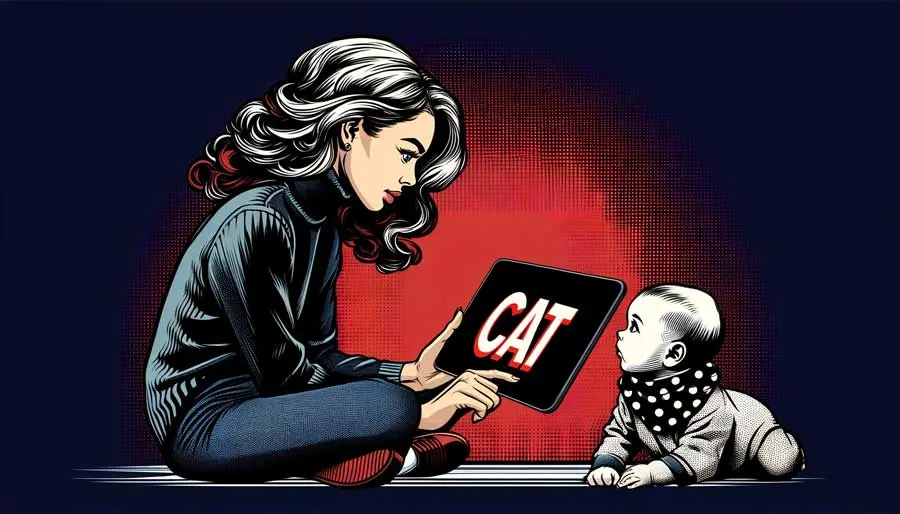Welcome to the thrilling world of children’s reading development! Unveiling the nuances and stages of literacy development can be as captivating as a beloved story. In this article, we will delve into the various phases of a child’s reading journey, shedding light on strategies and tips to foster effective and joyful learning.
Visuo-Semantic Association: Word Reading (From Age One)
The next step involves associating images and meanings with words. Visuo-semantic presentation sessions, where five words are visually introduced rapidly, can effectively strengthen this association.
Utilize the “Little pages” app to create a dual link between the image of a word, its meaning, and a corresponding image.
Reading Small Sentences (From Age 2):
As children master word reading, they can progress to reading small sentences. Encourage them with books tailored to their level, blending familiar words with new ones.
Grapho-Phonological Association (From Age 4):
Having already sparked phonological awareness by directing your baby’s attention to language sounds, you can now help them connect sounds to letters. Begin with simple sounds like “a,” “buh, buh,” “suh, suh, or kuh, kuh.” Learning letter names before associating them with sounds is counterproductive. Learn the names only after your child can articulate each sound. Here, start with simple sounds and later progress to complex ones.
Development of Comprehension:
Finally, the ultimate phase of the reading journey is comprehension development. Encourage critical thinking and introduce text comprehension activities. This will help children approach reading with an analytical perspective, deriving rich insights from every story.
The reading journey is an adventure full of discoveries for curious young minds. By adopting a holistic approach that integrates phonological awareness, visuo-semantic association, and comprehension development, you contribute to instilling a lasting passion for reading in children. So, open the pages of learning and let them explore the fascinating world of words and stories!
History of reading through the ages
The learning of reading utilizes advanced neurological functions that mature at different times. By the age of one, your baby can recognize graphical symbols such as words. However, they are not biologically ready to associate these symbols with sounds, making it impractical to teach them to read using a syllabic method. The acquisition of written language in our species occurred relatively recently. Human writing’s invention dates back to around 3500 BCE, using pictographic systems that did not engage the same brain functions as our modern reading-writing system. Your ancestors from that time were likely not literate. Additionally, at that time, only a very small percentage of the population was literate. The 50% literacy rate was only achieved in the 1820s-1850s in Europe. Human brain structures couldn’t evolve rapidly with this new acquisition since Darwinian evolution is a lengthy process. Stimulating visual reading areas at a young age, where the brain is still highly plastic, may potentially readjust the brain to reading.
Logo-Graphical Recognition:
From the age of one, if words are written large enough, your baby can recognize them. Write very large because a one-year-old’s visual system is still underdeveloped. Words should be presented briefly as the attention span is limited at this age. At this age, a child cannot yet distinguish between mirror letters. “b” and “d” will be identical letters to them. We use visual areas specialized in object recognition to recognize graphical symbols. To recognize a pot, you must be able to identify it with the handle on the right and know that it is the same object if the handle is on the left. To do this, we generalize the image with the handle in any arrangement; it’s the same object. Your baby will need to inhibit this generalization to read, which is somewhat counterintuitive.

b and d will be identical letters for him. We use visual areas specialized in object recognition to recognize graphic symbols. To recognize a saucepan, you must be able to recognize this object with the handle on the right and know that this object is identical if it has the handle on the left. To do this, we generalize the image with the handle in any arrangement it is the same object. Your baby will have to inhibit this generalization to be able to read, which is a bit unnatural
Share your experiences or ask questions in the comments below. What are your favorite tips for encouraging reading in children? Join the conversation and inspire other parents and educators in this exciting literary adventure!







